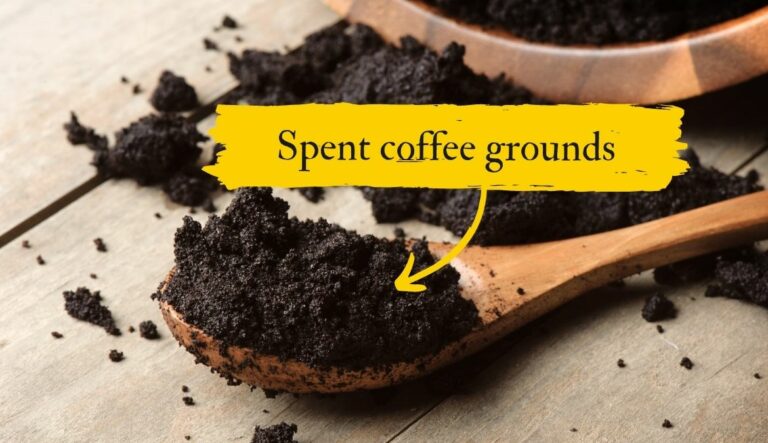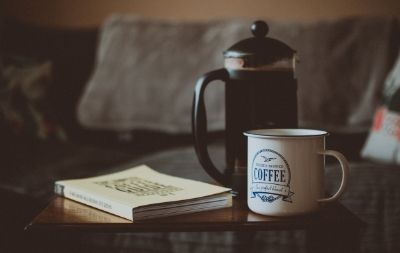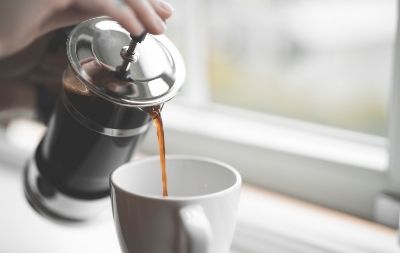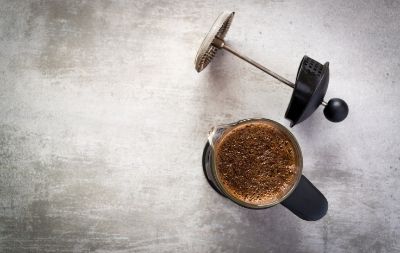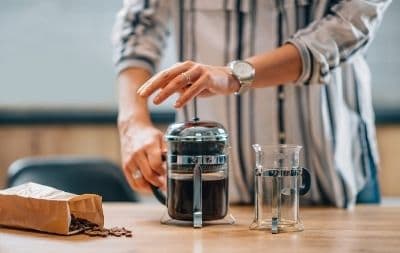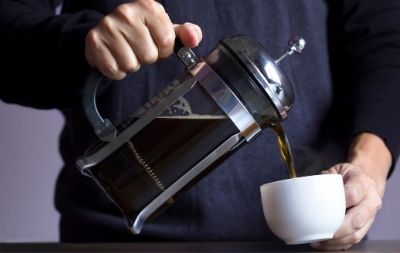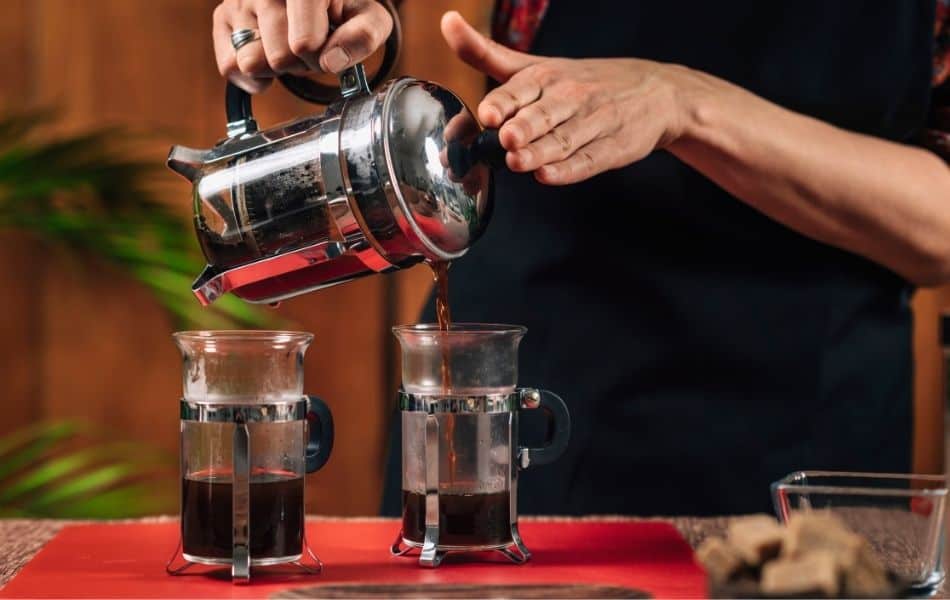
Lavazza makes some of the most popular roasts of coffee on the market, and the French press is, of course, one of the typical coffee aficionado’s favorite ways of brewing that coffee. These facts bring up a natural dilemma:
What is the best Lavazza for French Press? Lavazza Qualita Rossa is the best Lavazza for French press coffee making due to its full-bodied richness and almost ubiquitous popularity among those who try it. It has a medium roast which means bold, chocolatey flavors come through beautifully with a French Press style brew.
But, as we said, the question of which Lavazza coffee is best for use with a French press is entirely subjective, and you could disagree with our top pick and be entirely correct. That’s why we’re going to give you a few more choices, as well as give you a little information on why we think they make a great French press coffee. Read on!
Lavazza Qualita Rossa Coffee
Since we’ve already told which coffee we think is best, we may as well start there. Qualita Rossa is a sweeter coffee that can even be described as fruity. It is a medium roast that is perfect for coffee drinks with milk or creamer, such as lattes and cappuccinos.
In terms of strength, Lavazza Qualita is firmly in the middle of the pack, which is part of the reason it is a popular coffee, as it is not too strong nor too weak for most people. Add to that the versatility of it being suitable for all kinds of coffee machines, and you see why it has such broad appeal-and why we chose it as our best Lavazza for French press coffee making.
Lavazza Super Crema Coffee
Moving a little up the richness spectrum, this coffee is medium to dark roast coffee that, if we’re honest, probably skews a little heavier on the dark side of things.
Like Qualita Rossa, Super Crema has a hint of fruity sweetness to it, though it is slightly higher in intensity, which might make it a bit less suitable for people who prefer weaker coffee, but should play right into the preferences of those of you who want their coffee on the stronger side.
You will need a coffee grinder to use this coffee as it comes in the form of beans.
Lavazza Decaffeinated
Decaffeinated coffee lovers can sometimes feel a little overlooked by coffee companies. And, while it would be possible to make that argument here. Lavazza Decaffeinated is a great all-rounder coffee that should be suitable for most situations. Unfortunately, the demand for decaf coffee is not nearly as high as it is for regular coffee, which in turn leads companies like Lavazza to focus on the caffeinated offerings since they are liable to sell well.
Still, Lavazza has come up with a great blend that should help you get that coffee fix, even when you are laying off of the caffeine itself.
Lavazza Crema E Aroma
Quite similar to Qualita Rossa in flavors and richness, Crema E Aroma brings crema to the table, which means that tasty froth you get on top of your coffee when you have your cup poured by a professional barista. If this isn’t something you like, there’s no real reason to choose the Crema over Qualita Rossa. But, for those who do prefer a frothy coffee, this could be the one for you!
Beans or Ground?
Coffee can come in many forms, but you need coffee grounds for a French press. Still, many coffee-lovers prefer to buy their coffee in bean form and grind it down themselves. The primary reason you would do this is that coffee tends to stay fresher for longer when it is kept in bean form. This is largely because the more surface area there that is exposed to the outside world, the more opportunity there is for the essence of the coffee to leach out, which is ideal for extraction when making coffee but not great if when the coffee is sitting around waiting to be used.
Of course, storing your coffee in a sealed container will help to keep your coffee grounds fresher for longer, but what about buying the coffee already ground?
The trade-off is simple; a little convenience in exchange for a little less freshness in your coffee.
For the average coffee drinker, the difference won’t be enough to complain about, and perhaps the convenience will be worth it. After all, many of us lead very busy lives, and French presses are not the quickest of ways to make coffee-at least, not if you do it correctly. If you want to get the absolute best brew possible, however, you should buy coffee beans and spend a little extra time grinding them yourself.
Why Lavazza is ideal for French Press
What has Lavazza done to earn an entire post on just their coffee beans? Simply put, their quality, taste, and range of options have made them one of the most popular coffee brands available. Founded in 1895 in Turin, it represents an aspirational story of a small family business finding great success through excellent products.
In more practical terms to those of us living in the twenty-first century, Lavazza’s range of coffee does not just cover a broad spectrum of flavors and strengths but also prices, from budget to premium blends. Furthermore, their large-scale production allows them to serve their coffee to a significant audience, which doubtless played a large part in the widespread popularity of the brand.
How a French Press Works
All coffee works the same way in principle. You have your coffee, be it in-ground, bean, or even instant form, and you add hot water to the mix to extract that caffeinated goodness from those coffee grains. For instant coffee, the coffee granules simply dissolve into the water, but for Moka pots and French presses, the process is a little more involved.
The two processes are a little different, but the underlying mechanics are the same. You utilize hot water and pressure to force the water up from the bottom of your press or Moka pot and into an upper area where it is ready to pour. On its way through, it will pass through the coffee granules and, thanks to hot water extraction, the water will take some of that coffee taste away with it.
With a Moka pot, the pressure needed to force the water up through the coffee and into the top chamber is created by clever use of the hot air inside the pot. With a French press, however, things are a little more hands-on. Rather than placing the press over a stove and letting it heat the water as you would with a Moka pot, you put the coffee ground and hot water in the same place. After leaving it to sit for a few minutes, you smoothly press down on the plunger, which has tiny holes and filters on it to allow water through while preventing coffee grounds from following suit. The end result? A perfect coffee, free of bits of coffee grain.
Tips for Using a French Press
Choosing the best coffee is only part of the battle when making a drink using a French press-you also need to be able to make the coffee. Fortunately, using a French Press is easy, but that doesn’t mean there aren’t some things to look out for and tips to make your brewing experience that little more rewarding.
Buy a Good Grinder
Granted, this only applies to people who intend to buy their coffee in its natural bean form, rather than already-ground. But for those people, a decent grinder is essential. Not only can it affect the quality of your coffee, but it can also make your coffee-making experience much more enjoyable. Who doesn’t love the sound of coffee being expertly ground?
Don’t “Eyeball It”
If you are going to the trouble of making your coffee in a French press, it’s most likely because you enjoy your coffee and want the best brew you can make. And there’s nothing wrong with that. But there’s no sense in going to all the trouble of making your coffee with a French press if you’re going to put varying amounts of water and coffee in each time, which is exactly what you will be doing if you don’t measure things out accurately. Find the quantities that work for you, and make a note of how much it is.
Don’t Use Boiling Water
When you make coffee in a Moka pot, the water needs to boil initially because a certain heat needs to be reached to create the pressure needed. With a French press, you are creating the pressure manually, so there is no need for such high heat, and using boiling water can scorch your coffee.
Make Sure Your Coffee is Where It Should Be
Coffee grounds can very easily get into places they shouldn’t be, but be careful not to let them settle on the top of your plunger or around the upper section of the press. Not only will this leave unpleasant bits in your coffee, but it could also affect the seal around the plunger.

